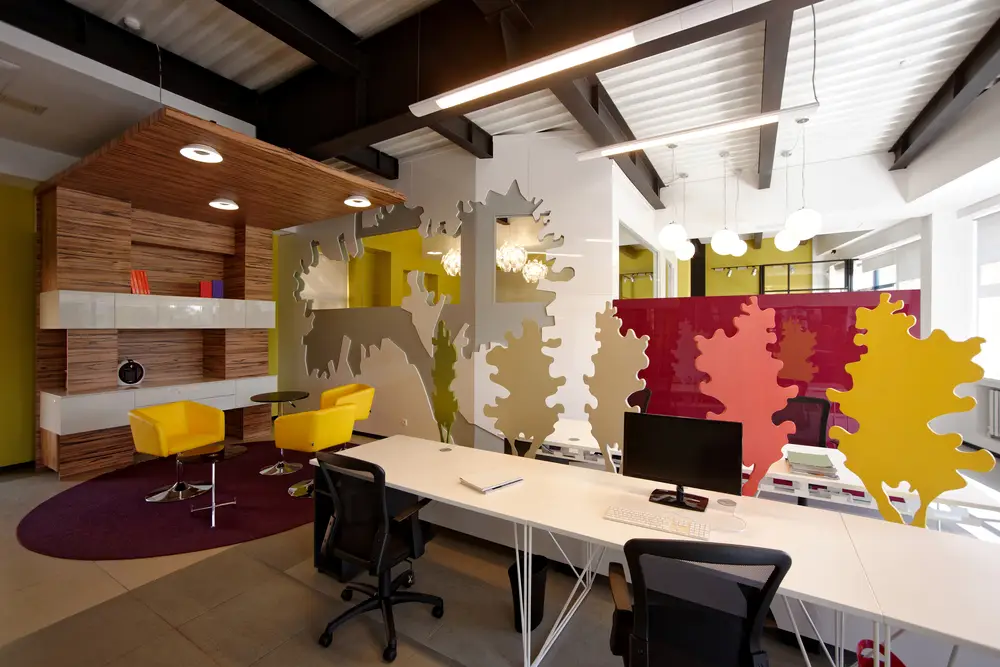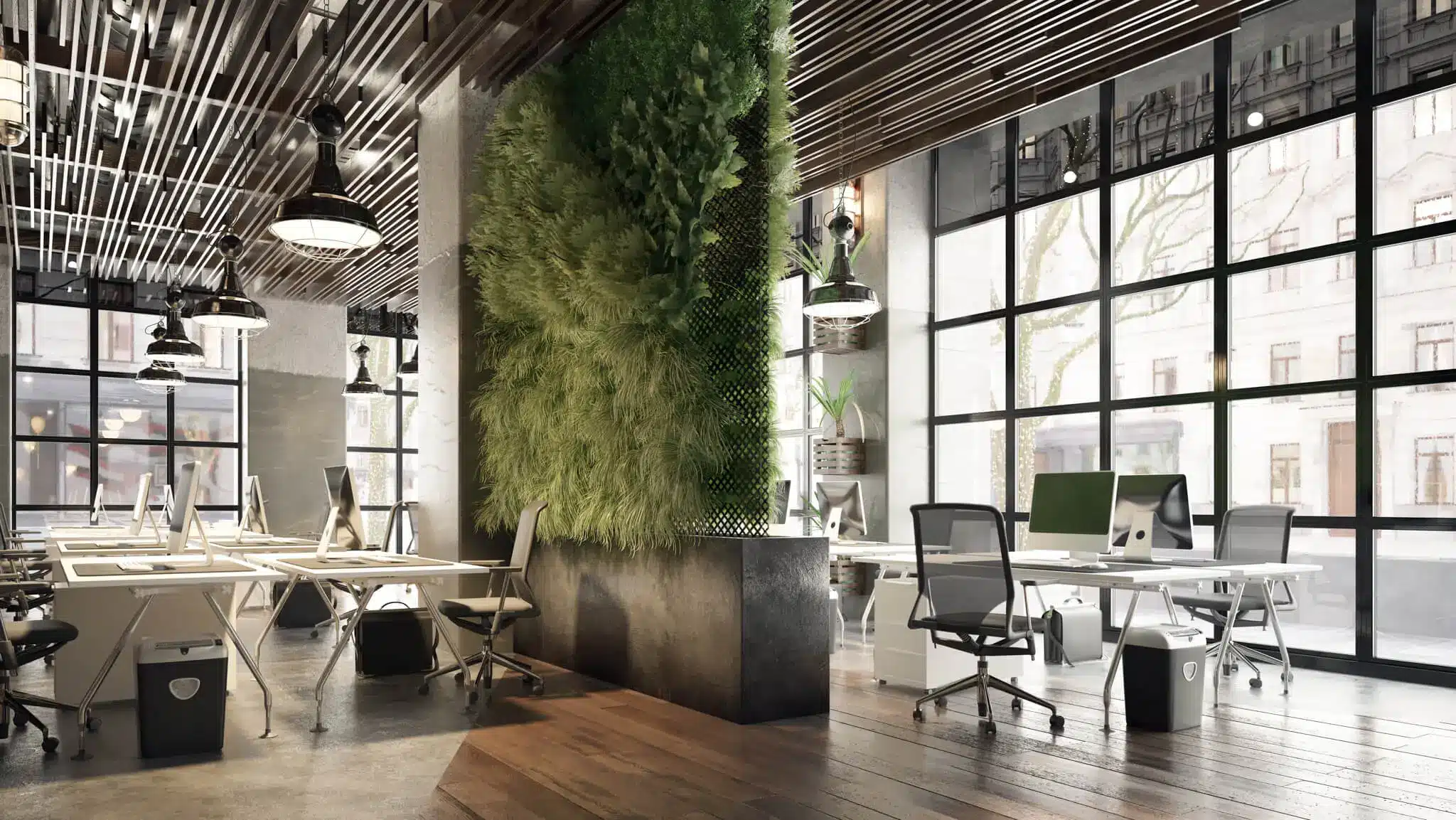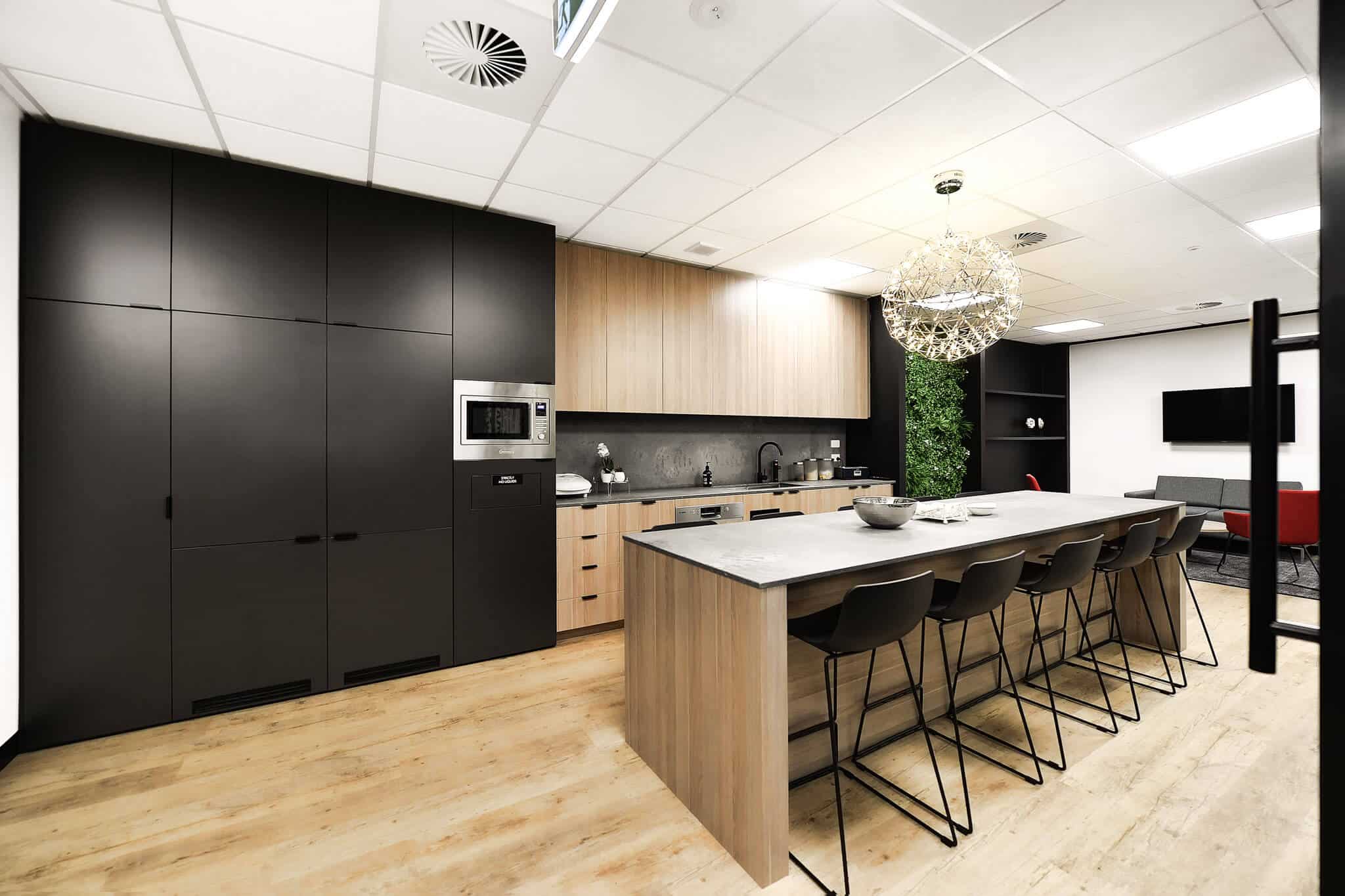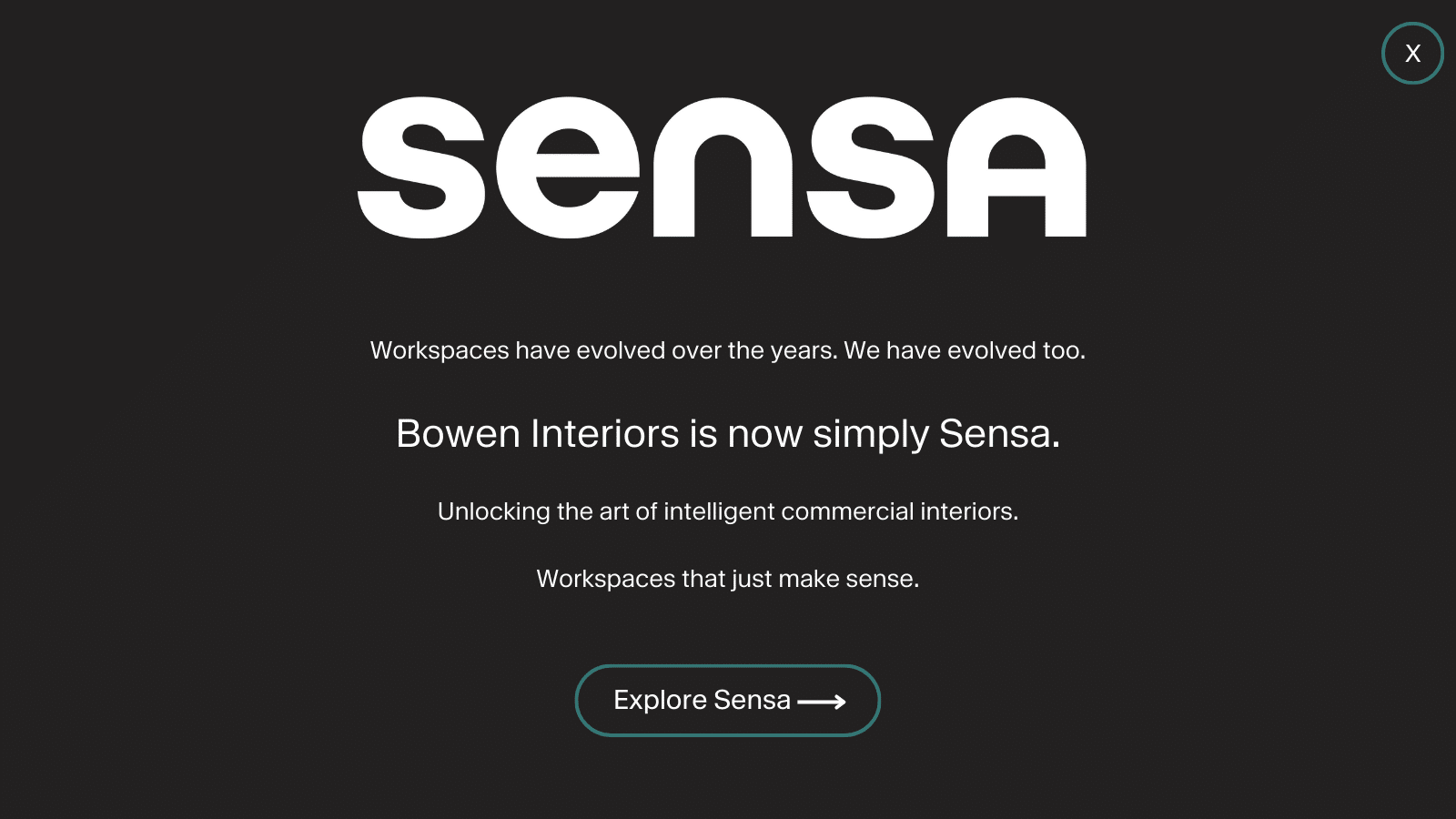The modern workplace is constantly evolving, and with that comes new challenges for those charged with keeping employees productive and engaged. One of the most important yet often overlooked challenges is workspace design and how it affects productivity.
With many employees still spending a great number of hours at work, it stands to reason that workplace design can significantly impact their productivity and collaboration.
This article will look at how workspace design enhances office productivity and collaboration. We’ll also discuss how you can create an effective office design for your business.
How does workspace design affect productivity?
Research has shown that a well-designed office workspace can increase productivity by 25%. To create a space that truly enhances workplace productivity, you need to take a holistic approach. That means considering everything from workspace layouts, lighting and flexible workspaces, through to having the right technology, furniture and fittings when office space planning.
For instance, the most highly engaged employees have been found to have more control over their work environment. This includes being able to move around freely, choosing where they want to work based on the task at hand, and more.
In other words, it’s not just about the physical space but also how employees interact with and use it. That’s what makes office design such a powerful tool for enhancing productivity.

What is flexible workspace design?
Flexible workspace design is all about creating a space that can be easily adapted to the needs of the people using it. This means considering the different ways in which people work and ensuring that the workspace can accommodate them.
At times, some people may prefer to work at a dedicated desk where they can spread out their work and at other times they may want to work in a more informal, open area or they may need access to private meeting rooms or quiet spaces for focus and concentration.
The key is to create a workspace that is designed to cater for the changing needs of employees.
14 Important workspace design considerations to foster productivity
For a workplace design to truly be effective in boosting productivity, a few key considerations need to be taken into account. These include:
1) Office layout
The most significant factor to consider is the layout of the space. How will employees be able to move around freely? What type of work areas will there be? And how will these areas be connected?
There are different approaches to office layouts that can be used to promote collaboration and increase productivity. The most common is the open office plan layout, characterised by large, open spaces with few walls or partitions.
Open-plan offices encourage collaboration by making it easy for employees to see and talk to each other.
Another option is the activity-based workplace design, featuring different spaces designed around employees’ specific needs. This might involve creating dedicated areas for individual work, teamwork, and socialising.
The key is to find the right balance for your business. Too much open plan working space can lead to distractions, while too much partitioning can make the space feel claustrophobic and can isolate employees from each other.
2) Flexible workspaces
It’s one thing to have a flexible office layout, but it’s another to have actual flexible workspaces. This is where modular furniture and mobile workstations come in.
Modular furniture can be easily reconfigured to meet the changing needs of employees. For instance, a group of desks can be combined to create temporary meeting spaces. Or, they can be separated to create a more open, collaborative area.
Mobile workstations are another way to promote flexibility. These are usually small, rolling carts that can be easily moved around the office. They provide employees with a dedicated space to work without being tied to a specific location.
Similarly, flexible workspaces could also mean using hot desks–desks that anyone can use on a first-come, first-served basis. This is a great technique for creating movement around the office without worrying about assigned seating.

3) Coworking space
If the nature of your business is such that employees must collaborate frequently, you might want to consider cordoning off a section of the office as a coworking space. This is a shared space where employees can come to work on specific projects without having to be in a traditional office space.
The key to making this new space effective is to provide it with the right amenities, including comfortable furniture, natural light, and access to technology. It’s also essential to make sure that the space is centrally located and easily accessible to all employees.
4) Private spaces and quiet areas
While some employees may thrive in an open, collaborative working environment, others may prefer to have a little more privacy. This is why it’s so important to provide both private spaces and quiet areas in the office.
Private areas can be used for individual work or small meetings. They should be located in a quiet office area, away from distractions. They are also a place where employees can go to escape the hustle and bustle of busy office environments.
They could be small nooks or dedicated rooms. The key is ensuring they’re quiet and comfortable, so employees either focus or relax and unwind.

5) Multipurpose spaces
What if you don’t have the space to create a dedicated coworking space or quiet area? In that case, you can use multipurpose spaces to serve multiple functions.
For instance, conference rooms could be used either for meetings or as a common space. Or a corner of the office could be used as a relaxation area, complete with comfortable chairs and a few potted plants.
With an innovative design approach you can transform any office area into a productive and collaborative space.
6) Breakout spaces
Breakout spaces are the perfect way to encourage informal collaboration and creativity. These are small, relaxed common spaces where employees can gather to brainstorm ideas or take a break from work.
The best breakout spaces are those that are comfortable and inviting. They should be furnished with soft seating, plenty of natural light, and space to move around.
One of the benefits of breakout spaces is that they can be used for various purposes. For instance, they can be used as impromptu meeting rooms or simply as a place to relax and take a break.
Their versatility makes them a valuable addition to all office spaces.
7) Wellbeing spaces
In today’s world, taking care of our physical and mental health is more important than ever. This is why wellbeing spaces are becoming increasingly popular in the workplace.
Wellbeing spaces are dedicated areas where employees can go to relax, unwind, and recharge. They can be used for various activities, such as yoga or meditation. They have a significant impact on employee wellbeing, which in turn has a positive impact on productivity.
8) Bring your culture to life
Your office design provides an opportunity to bring to life your company culture. This is why it’s important to design a space that reflects the values and mission of your business.
For instance, if your company culture is all about collaboration, create an open and inviting space that encourages employees to work together. Or, if you value creativity and innovation, include breakout areas and multipurpose areas that boost each employee’s ability to think outside the box.
No matter your company culture, there’s a way to design an office space that inspires your team. By infusing your space with your company’s values, you can create a more engaging and productive workspace.
9) Access to technology
In a modern office, it’s important to have access to the latest technology. This means having wireless monitors, plenty of charging stations, whiteboards, and more.
It’s also essential to provide employees with the right tools and resources. For instance, if your business relies heavily on communication and collaboration, invest in apps and software that facilitate that.

10) The right office furniture
Furniture is an important part of any office space. Ergonomic furniture, in particular, is important for maintaining employee health and employee productivity.
Consider ergonomic chairs with adjustable heights and lumbar support design features. Standing desks are a good choice for those who want to stay active while they work. And, if you have employees working in close quarters, noise-cancellation headphones can be a lifesaver.
11) Adequate storage
For employees to feel like their workplace is organised and efficient, there needs to be adequate storage, such as filing cabinets, shelves, and storage spaces. Otherwise, employees will end up feeling cluttered and overwhelmed.
It’s also important to have a system for organising and labelling all of the items in the office. This will help employees find what they need when they need it.
12) Lighting
Natural lighting is the best lighting for an office space. If possible, try to design your space so that employees can access plenty of natural light. The Journal of Clinical Sleep Medicine found that employees who work near a window sleep better than those who don’t, and good sleep is essential for employees to stay focused and productive.
If you can’t rely on natural light, make sure to include lighting that simulates daylight, like natural light bulbs.
Overhead lighting can be harsh, so it’s important to use a mix of different light sources to help create a more inviting and pleasant working environment.
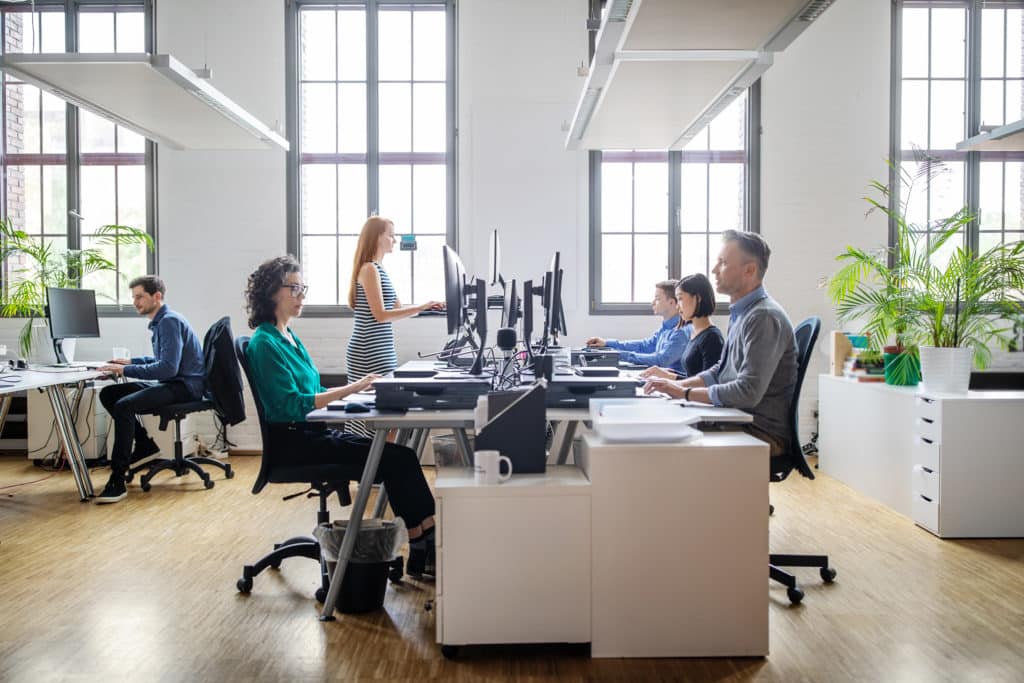
13) Nature – bringing the outside in
Studies have shown that being in nature can profoundly impact productivity, creativity, and morale. To create a truly effective office space, it’s important to bring the outdoors in.
One way to do this is by including indoor plants throughout the office. They can help purify the air, boost moods, and reduce stress levels. You might even want to consider installing a living wall for both its visual appeal and wellbeing benefits.
Another way to bring nature into the office design is by incorporating natural materials. Wood, stone, and bamboo can help create a more calming and serene environment.

14) Air quality
Finally, it’s important to consider the air quality in your office space. Poor air quality can lead to a host of problems, including fatigue, headaches, and difficulty concentrating.
To ensure that the air in your office is clean and healthy, make sure to ventilate the space regularly. You might also consider investing in air purifiers or air filters to maintain fresh air in the office.
It’s been proven that companies with improved ventilation and lighting have experienced up to 11% and 23% higher workplace productivity, respectively.
Ready to consider inspiring workspace design that will boost productivity?
Whether your fit out project is for an office refurbishment, an office relocation or a new office, as a leading interior design and fit out company we can assist you every step of the way.
Contact us today to discuss your workspace design and office space planning needs. We’re here to help you create, inspire and thrive!


